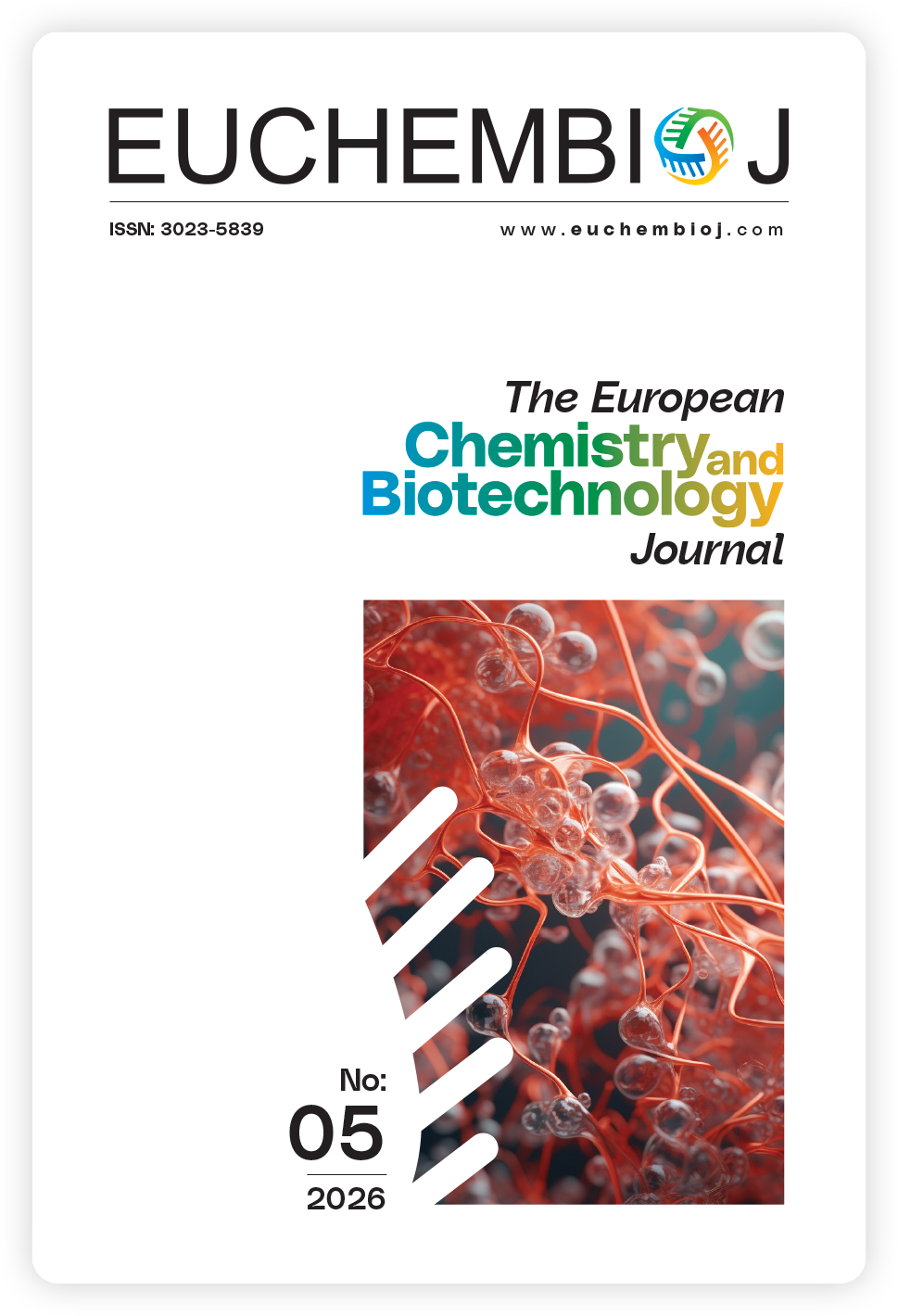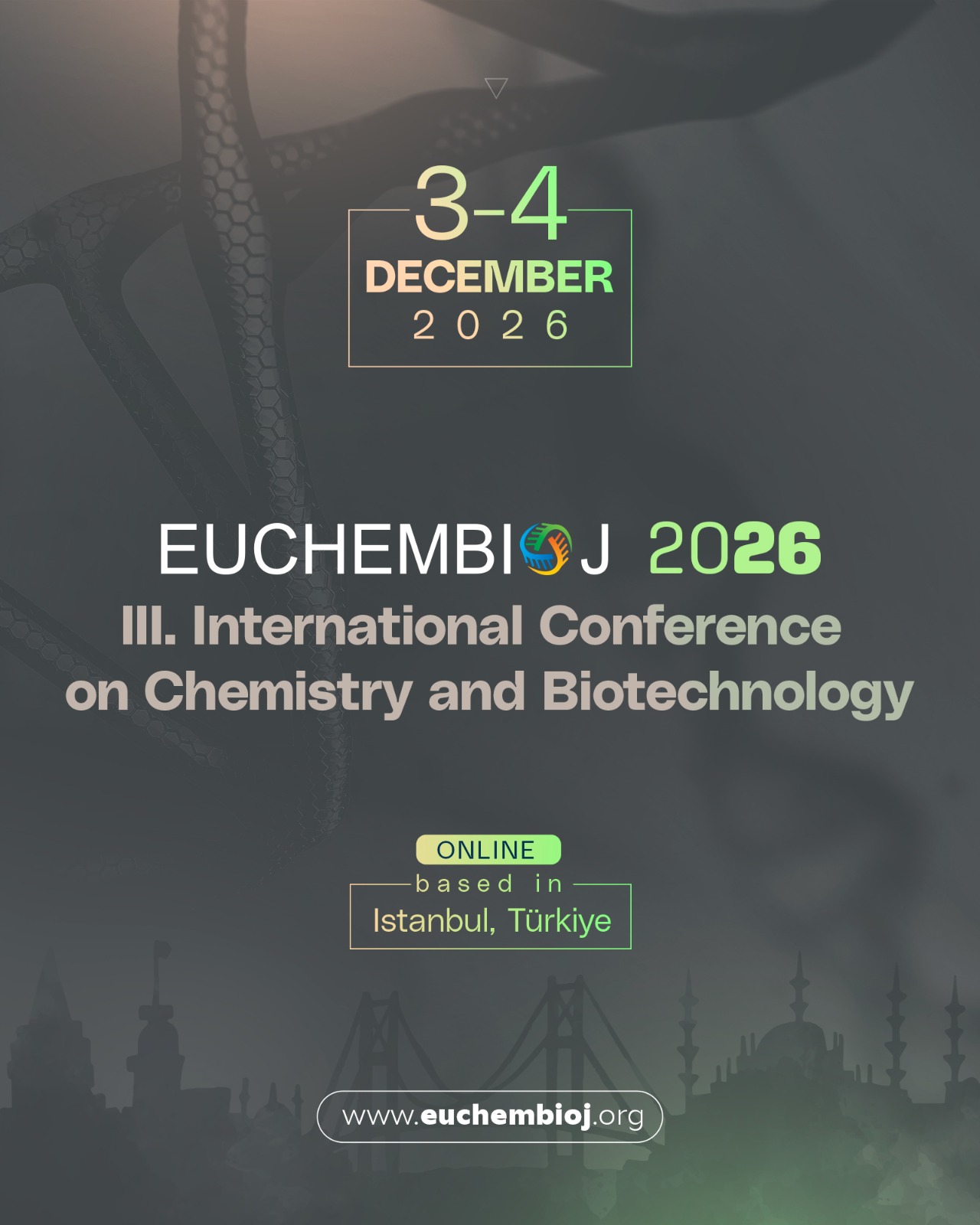Dynamics of C-terminal tail of human STING structure, active and inactive conformations
DOI:
https://doi.org/10.62063/ecb-56Keywords:
MD simulations, Protein Modeling, STINGAbstract
The Stimulator of Interferon Genes (STING) protein is a transmembrane protein encoded by the STING1 gene. It is a critical component of the innate immune system, which serves as a sensor for cytosolic DNA and plays a crucial role in activating the Type-I interferon pathway. The enzyme cyclic GMP-AMP synthase (cGAS) binds to DNA and assists in the synthesis of cyclic GMP-AMP (cGAMP) from GTP and ATP. This reaction stimulates the activation of TANK-binding kinase 1 (TBK1), an enzyme involved in signaling pathways that result in the phosphorylation of STING. The interaction between STING, TBK1, and IRF3 selectively interferes with IRF3 phosphorylation without obstructing TBK1 activation, leading to mutations in STING. This process indicates that STING functions as a scaffold protein, guiding and supporting TBK1’s phosphorylation of IRF3. IRF3 activation occurs when STING’s C-terminal tail (CTT) binds to IRF3, leading to conformational change. STING’s CTT tail plays a crucial structural and functional role in regulating innate immune responses. Understanding the structure of the CTT loop is vital for unraveling the mechanism of STING-mediated signaling. In this study, we performed molecular dynamics (MD) simulations to investigate the importance of the CTT loop for STING activation through comparing the molecular interactions within STING-TBK1 complexes in their inactive and active states. We integrated the findings of previous modeling studies into our simulations.
References
Al-Masri, R. a. O., Audu-Bida, H., & Eşsiz, Ş. (2021). Modeling of C-terminal tail of human STING and its interaction with tank-binding kinase 1. TURKISH JOURNAL OF BIOLOGY. https://doi.org/10.3906/biy-2108-90 DOI: https://doi.org/10.3906/biy-2108-90
Bai, J., & Liu, F. (2019). The cGAS-cGAMP-STING Pathway: A Molecular Link Between Immunity and Metabolism. Diabetes, 68(6), 1099–1108. https://doi.org/10.2337/dbi18-0052 DOI: https://doi.org/10.2337/dbi18-0052
Barber, G. N. (2015). STING: infection, inflammation and cancer. Nature Reviews. Immunology, 15(12), 760–770. https://doi.org/10.1038/nri3921 DOI: https://doi.org/10.1038/nri3921
Barker, J. R., Koestler, B. J., Carpenter, V. K., Burdette, D. L., Waters, C. M., Vance, R. E., & Valdivia, R. H. (2013). STING-dependent recognition of cyclic di-AMP mediates type I interferon responses during Chlamydia trachomatis infection. mBio, 4(3), e00018–e13. https://doi.org/10.1128/mBio.00018-13 DOI: https://doi.org/10.1128/mBio.00018-13
Bridgeman, A., Maelfait, J., Davenne, T., Partridge, T., Peng, Y., Mayer, A., Dong, T., Kaever, V., Borrow, P., & Rehwinkel, J. (2015). Viruses transfer the antiviral second messenger cGAMP between cells. Science, 349(6253), 1228–1232. https://doi.org/10.1126/science.aab3632 DOI: https://doi.org/10.1126/science.aab3632
Brooks, B. R., Bruccoleri, R. E., Olafson, B. D., States, D. J., Swaminathan, S., & Karplus, M. (1983). CHARMM: A program for macromolecular energy, minimization, and dynamics calculations. Journal of Computational Chemistry, 4(2), 187–217. doi:10.1002/jcc.540040211 DOI: https://doi.org/10.1002/jcc.540040211
Chen, Q., Sun, L., & Chen, Z. J. (2016). Regulation and function of the cGAS-STING pathway of cytosolic DNA sensing. Nature immunology, 17(10), 1142–1149. https://doi.org/10.1038/ni.3558 DOI: https://doi.org/10.1038/ni.3558
Ergun, S. L., & Li, L. (2020). Structural Insights into STING Signaling. Trends in cell biology, 30(5), 399–407. https://doi.org/10.1016/j.tcb.2020.01.010 DOI: https://doi.org/10.1016/j.tcb.2020.01.010
Gratz, N., Hartweger, H., Matt, U., Kratochvill, F., Janos, M., Sigel, S., Drobits, B., Li, X. D., Knapp, S., & Kovarik, P. (2011). Type I interferon production induced by Streptococcus pyogenes-derived nucleic acids is required for host protection. PLoS pathogens, 7(5), e1001345. https://doi.org/10.1371/journal.ppat.1001345 DOI: https://doi.org/10.1371/journal.ppat.1001345
Huang, J., & MacKerell, A. D., Jr (2013). CHARMM36 all-atom additive protein force field: validation based on comparison to NMR data. Journal of computational chemistry, 34(25), 2135–2145. https://doi.org/10.1002/jcc.23354 DOI: https://doi.org/10.1002/jcc.23354
Humphrey, W., Dalke, A., & Schulten, K. (1996). VMD: Visual molecular dynamics. Journal of Molecular Graphics, 14(1), 33–38. https://doi.org/10.1016/0263-7855(96)00018-5 DOI: https://doi.org/10.1016/0263-7855(96)00018-5
Hussain, B., Xie, Y., Jabeen, U., Lu, D., Yang, B., Wu, C., & Shang, G. (2022). Activation of STING Based on Its Structural Features. Frontiers in immunology, 13, 808607. https://doi.org/10.3389/fimmu.2022.808607 DOI: https://doi.org/10.3389/fimmu.2022.808607
Ma, Z., Jacobs, S. R., West, J. A., Stopford, C., Zhang, Z., Davis, Z., Barber, G. N., Glaunsinger, B. A., Dittmer, D. P., & Damania, B. (2015). Modulation of the cGAS-STING DNA sensing pathway by gammaherpesviruses. Proceedings of the National Academy of Sciences of the United States of America, 112(31), E4306–E4315. https://doi.org/10.1073/pnas.1503831112 DOI: https://doi.org/10.1073/pnas.1503831112
M., Diamond, M. S., … Rice, C. M. (2015). Corrigendum: Pan-viral specificity of IFN-induced genes reveals new roles for cGAS in innate immunity. Nature, 525(7567), 144. https://doi.org/10.1038/nature14555 DOI: https://doi.org/10.1038/nature14555
Ishikawa, H., & Barber, G. N. (2008). STING is an endoplasmic reticulum adaptor that facilitates innate immune signaling. Nature, 455(7213), 674–678. https://doi.org/10.1038/nature07317 DOI: https://doi.org/10.1038/nature07317
Ishikawa, H., Ma, Z., & Barber, G. N. (2009). STING regulates intracellular DNA-mediated, type I interferon-dependent innate immunity. Nature, 461(7265), 788–792. https://doi.org/10.1038/nature08476 DOI: https://doi.org/10.1038/nature08476
Pastor RW, Brooks BR, Szabo A. An analysis of the accuracy of Langevin and molecular dynamics algorithms. Mol Phys. 1988;65(6):1409-1419. doi:10.1080/00268978800101881 DOI: https://doi.org/10.1080/00268978800101881
Patel, S., & Jin, L. (2019). TMEM173 variants and potential importance to human biology and disease. Genes & Immunity, 20(1), 82–89. https://doi.org/10.1038/s41435-018-0029-9 DOI: https://doi.org/10.1038/s41435-018-0029-9
Phillips, J. C., Hardy, D. J., Maia, J. D. C., Stone, J. E., Ribeiro, J. V., Bernardi, R. C., Buch, R., Fiorin, G., Hénin, J., Jiang, W., McGreevy, R., Melo, M. C. R., Radak, B. K., Skeel, R. D., Singharoy, A., Wang, Y., Roux, B., Aksimentiev, A., Luthey-Schulten, Z., Kalé, L. V., … Tajkhorshid, E. (2020). Scalable molecular dynamics on CPU and GPU architectures with NAMD. The Journal of Chemical Physics, 153(4), 044130. https://doi.org/10.1063/5.0014475 DOI: https://doi.org/10.1063/5.0014475
Schoggins, J. W., MacDuff, D. A., Imanaka, N., Gainey, M. D., Shrestha, B., Eitson, J. L., Mar, K. B., Richardson, R. B., Ratushny, A. V., Litvak, V., Dabelic, R., Manicassamy, B., Aitchison, J. D., Aderem, A., Elliott, R. M., García-Sastre, A., Racaniello, V., Snijder, E. J., Yokoyama, W.
Shang, G., Zhang, C., Chen, Z. J., Bai, X. C., & Zhang, X. (2019). Cryo-EM structures of STING reveal its mechanism of activation by cyclic GMP-AMP. Nature, 567(7748), 389–393. https://doi.org/10.1038/s41586-019-0998-5 DOI: https://doi.org/10.1038/s41586-019-0998-5
Smith J. A. (2021). STING, the Endoplasmic Reticulum, and Mitochondria: Is Three a Crowd or a Conversation?. Frontiers in immunology, 11, 611347. https://doi.org/10.3389/fimmu.2020.611347 DOI: https://doi.org/10.3389/fimmu.2020.611347
Sun, L., Wu, J., Du, F., Chen, X., & Chen, Z. J. (2013). Cyclic GMP-AMP Synthase Is a Cytosolic DNA Sensor That Activates the Type I Interferon Pathway. Science, 339(6121), 786–791. https://doi.org/10.1126/science.1232458 DOI: https://doi.org/10.1126/science.1232458
Tanaka, Y., & Chen, Z. J. (2012). STING specifies IRF3 phosphorylation by TBK1 in the cytosolic DNA signaling pathway. Science signaling, 5(214), ra20. https://doi.org/10.1126/scisignal.2002521 DOI: https://doi.org/10.1126/scisignal.2002521
Touw, W.G. et al. (2015) “A series of PDB-related databanks for everyday needs,” Nucleic Acids Research, 43(D1), pp. D364–D368. Available at: https://doi.org/10.1093/NAR/GKU1028. DOI: https://doi.org/10.1093/nar/gku1028
Tsuchiya, Y., Jounai, N., Takeshita, F., Ishii, K. J., & Mizuguchi, K. (2016). Ligand-induced Ordering of the C-terminal Tail Primes STING for Phosphorylation by TBK1. EBioMedicine, 9, 87–96. https://doi.org/10.1016/j.ebiom.2016.05.039 DOI: https://doi.org/10.1016/j.ebiom.2016.05.039
Wan, D., Jiang, W., & Hao, J. (2020). Research Advances in How the cGAS-STING Pathway Controls the Cellular Inflammatory Response. Frontiers in immunology, 11, 615. https://doi.org/10.3389/fimmu.2020.00615 DOI: https://doi.org/10.3389/fimmu.2020.00615
Watson, R. O., Bell, S. L., MacDuff, D. A., Kimmey, J. M., Diner, E. J., Olivas, J., Vance, R. E., Stallings, C. L., Virgin, H. W., & Cox, J. S. (2015). The Cytosolic Sensor cGAS Detects Mycobacterium tuberculosis DNA to Induce Type I Interferons and Activate Autophagy. Cell host & microbe, 17(6), 811–819. https://doi.org/10.1016/j.chom.2015.05.004 DOI: https://doi.org/10.1016/j.chom.2015.05.004
Webb, B., & Sali, A. (2016). Comparative Protein Structure Modeling Using MODELLER. Current Protocols in Bioinformatics, 54(1). https://doi.org/10.1002/cpbi.3 DOI: https://doi.org/10.1002/cpbi.3
Yang, H., Wang, H., Ren, J., Chen, Q., & Chen, Z. J. (2017). cGAS is essential for cellular senescence. Proceedings of the National Academy of Sciences, 114(23). https://doi.org/10.1073/pnas.1705499114 DOI: https://doi.org/10.1073/pnas.1705499114
Zhao, B., Du, F., Xu, P., Shu, C., Sankaran, B., Bell, S. L., Liu, M., Lei, Y., Gao, X., Fu, X., Zhu, F., Liu, Y., Laganowsky, A., Zheng, X., Ji, J.-Y., West, A. P., Watson, R. O., & Li, P. (2019). A conserved PLPLRT/SD motif of STING mediates the recruitment and activation of TBK1. Nature, 569(7758), 718–722. https://doi.org/10.1038/s41586-019-1228-x DOI: https://doi.org/10.1038/s41586-019-1228-x
Zhang, C., Shang, G., Gui, X., Zhang, X., Bai, X. C., & Chen, Z. J. (2019). Structural basis of STING binding with and phosphorylation by TBK1. Nature, 567(7748), 394–398. https://doi.org/10.1038/s41586-019-1000-2 DOI: https://doi.org/10.1038/s41586-019-1000-2
Downloads
Published
How to Cite
Issue
Section
License

This work is licensed under a Creative Commons Attribution-NonCommercial 4.0 International License.








